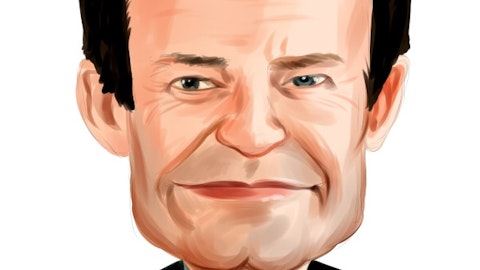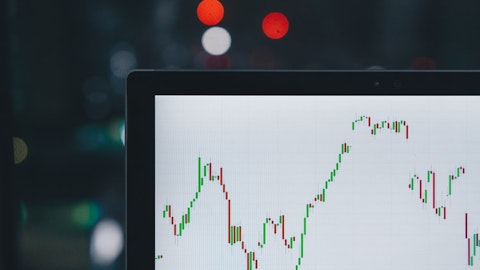Bryan Hughes: We do think that, that is one of the things that will impact Q2 as well. I mentioned, as did Mike, the dealer sentiment having an impact on Q1 and ordering patterns into Q2. That’s certainly one of the things that we hear from dealers is that they want to minimize model year ’24 purchases until they see more progress industry wide on those model year ’23s on their lots.
Operator: And our next question is going to come from the line of Bret Jordan with Jefferies.
Bret Jordan: Could you talk a little bit more about the incremental SG&A investment? I think you talked around sort of engineering data, IT. Could you give us a bit more color there and how we should think about that in sort of in ’24?
Michael Happe: I’ll begin and then Bryan will probably add some additional context as well. I had felt candidly through the last month or so that the Street was modeling our SG&A a little lower than what we had been planning. Our SG&A for quarter one actually came in lower than what our management plan on SG&A was for quarter one. So the SG&A is a little bit different in its variable cost nature than really the manufacturing side of our business, and Bryan can probably speak to that a little bit more articulately than I can. But as we returned to a new fiscal year, you saw some things roll over, as one example would be the reset of bonuses for certain employees in the organization. But I’m going to speak to the specific things I referenced in the call, engineering being one of them.
We are spending intentional dollars around the development of new products, around work in the advanced technology area on topics like electrification and even within our businesses. Our businesses are keeping their foot to the pedal in terms of new products that will be introduced later in this fiscal year or future fiscal years. I talked about digital assets. The world is changing from a brick-and-mortar analog environment to more of an online digital world. And we are investing in numerous tools within our businesses that will help us compete effectively in the future from a digital engagement standpoint with consumers. And lastly, IT systems. Winnebago Industries, when I joined the company now almost eight years ago, just was not modernized in the way we did business and particularly the foundation of IT systems.
And we continue to travel along that path and we are making intentional investments in ERP systems, in customer service phone systems. We’re making investments in financial systems. We’re making investments in customer relation management systems, all with the intention of obviously modernizing the business and setting the stage for success in the future. So we probably had a little bit of a misalignment with the Street this quarter on that impact of both resetting SG&A but also adding in some of those investments, but now you guys are aware of our approach on that. Bryan, any other context?
Bryan Hughes: Yes, I’ll give you a little more context, Bret. We have historically talked about our cost structure being 85% variable. SG&A is clearly a really small part of our cost structure, but it’s much more fixed. I would use more of a 25% variable as a high level estimate. So that might help some of the modeling. We’ve also added Lithionics. Obviously, that business unit SG&A since last year, not since Q4, so not sequentially but versus last year, that’s an add as well as the purchase accounting impact from that deal. Mike mentioned the investments we’re making, all very intentional. He also mentioned the bonus plans and the variability that, that might cause from one quarter to the next. So in general, you got to also appreciate that SG&A is more subject to volatility from one quarter to the next as we deal with some nonrecurring type items as well.
So we’ll continue to provide commentary around those types of things as they occur. But I guess that would be additional context I would add.
Bret Jordan: And then a quick question. I guess in the last couple of years, the RVIA started out pretty high and ended up substantially lower, and it seems like they’ve taken the number down a little bit already for ’24. I guess it’s in line with your forecast. I guess do you think that’s substantially derisked? I guess, what would you see that could happen that would cause the RVIA number to come in 20% plus below the initial forecast as it has the last couple of years, or are they conservative enough at this point, do you think?
Michael Happe: Bret, we have members of our leadership team that participate in the process with RVIA on the market statistics committee to help set that number. And that’s a good thing that OEMs and suppliers are working with RVIA to try to come up with a collective projection for shipments. The element that comes to mind when you ask that question for me is timing. I think that the question here is when will dealers begin to feel more confident in trending towards that 1:1 retail to wholesale replenishment ratio that not only Winnebago Industries has referenced but some of our peers as well. And I think — we’re not anticipating a large retail difference in calendar ’24 versus calendar ’23. We think it will be a relatively flat environment.
And so it really comes down to channel confidence in terms of taking more inventory to put on their lots to support a healthy retail environment with consumers. And I think the timing of that sort of channel shipment flow trend will be what ultimately determines the shipment number. Certainly, if retail is positive, if the Fed cuts interest rates, if consumers feel some easing and start to return to spending in the RV and marine industries, that retail boost or energy could certainly also help deliver that higher confidence to our dealers. So I think it’s timing. And I think the RVIA shipment number is probably more balanced in terms of upside and downside at this new 350,000 number.




